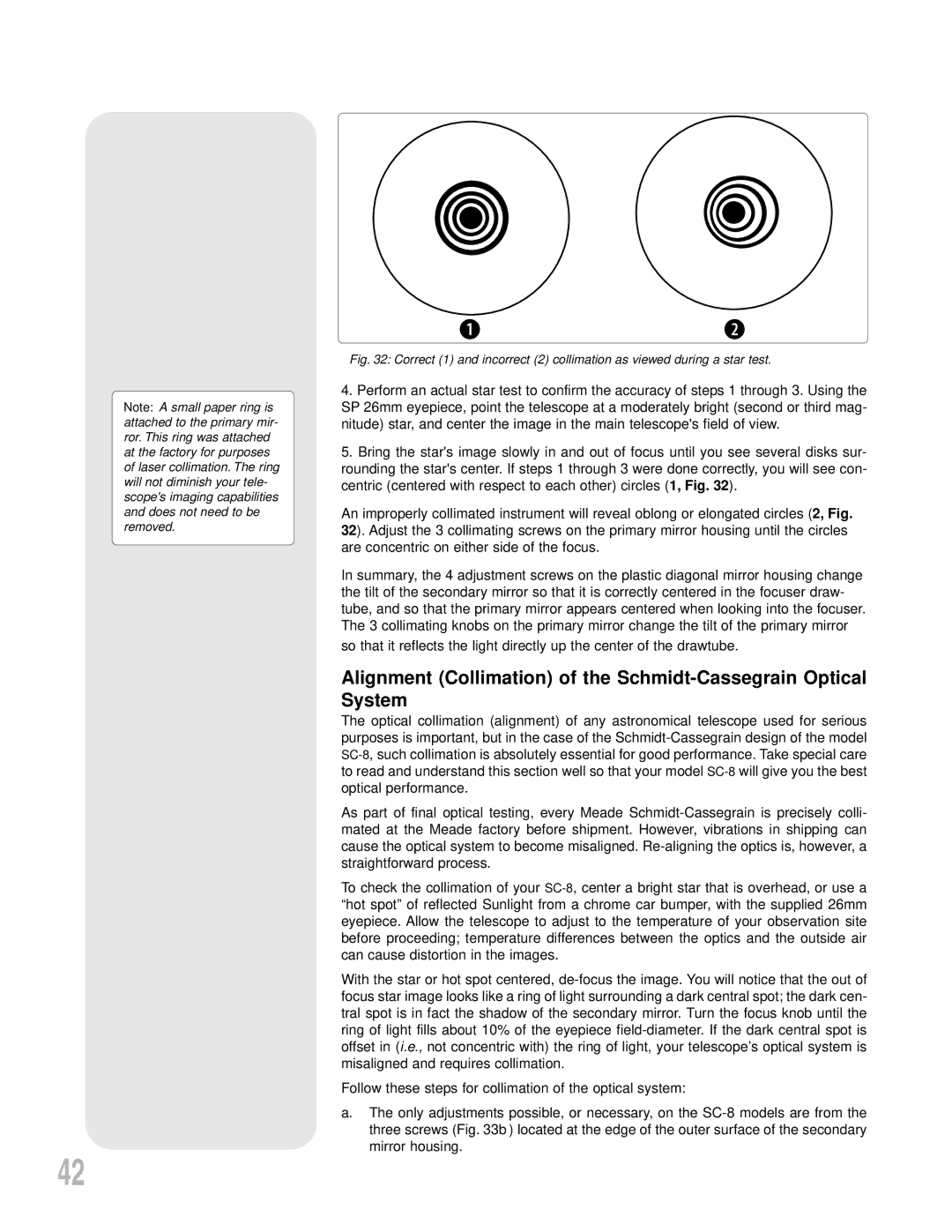
Note: A small paper ring is attached to the primary mir- ror. This ring was attached at the factory for purposes of laser collimation. The ring will not diminish your tele- scope's imaging capabilities and does not need to be removed.
bc
Fig. 32: Correct (1) and incorrect (2) collimation as viewed during a star test.
4.Perform an actual star test to confirm the accuracy of steps 1 through 3. Using the SP 26mm eyepiece, point the telescope at a moderately bright (second or third mag- nitude) star, and center the image in the main telescope's field of view.
5.Bring the star's image slowly in and out of focus until you see several disks sur- rounding the star's center. If steps 1 through 3 were done correctly, you will see con- centric (centered with respect to each other) circles (1, Fig. 32).
An improperly collimated instrument will reveal oblong or elongated circles (2, Fig. 32). Adjust the 3 collimating screws on the primary mirror housing until the circles are concentric on either side of the focus.
In summary, the 4 adjustment screws on the plastic diagonal mirror housing change the tilt of the secondary mirror so that it is correctly centered in the focuser draw- tube, and so that the primary mirror appears centered when looking into the focuser. The 3 collimating knobs on the primary mirror change the tilt of the primary mirror so that it reflects the light directly up the center of the drawtube.
Alignment (Collimation) of the
The optical collimation (alignment) of any astronomical telescope used for serious purposes is important, but in the case of the
As part of final optical testing, every Meade
To check the collimation of your
With the star or hot spot centered,
Follow these steps for collimation of the optical system:
a.The only adjustments possible, or necessary, on the
42
